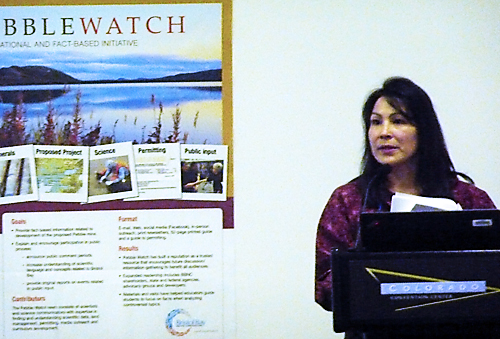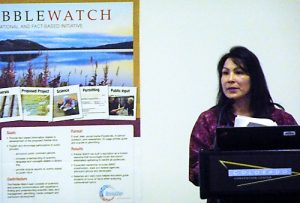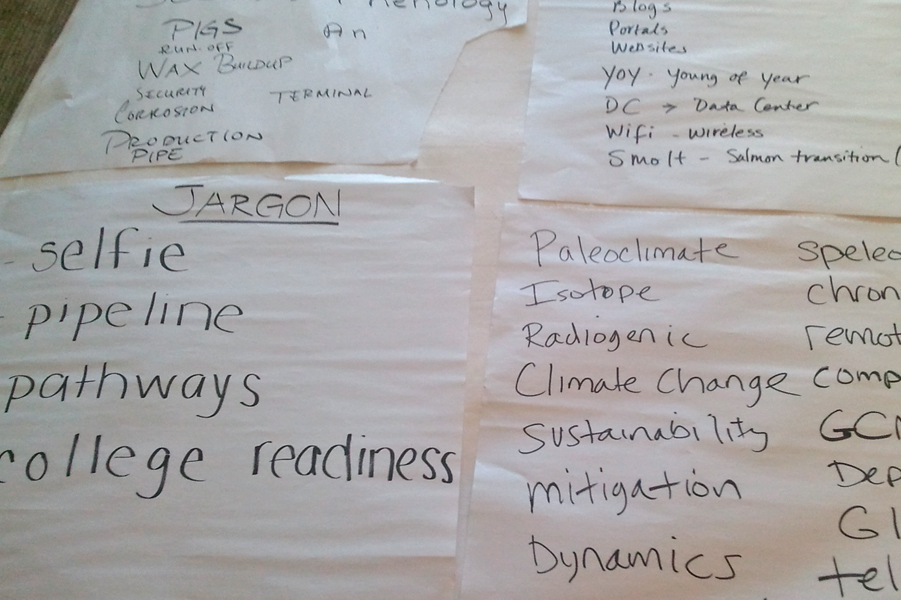
 A Pebble Watch-based interactive presentation on communicating science premiered Nov. 2 in Denver to a group of Native American scientists, students and educators attending the American Indian Science and Engineering Society (AISES) annual conference this year.
A Pebble Watch-based interactive presentation on communicating science premiered Nov. 2 in Denver to a group of Native American scientists, students and educators attending the American Indian Science and Engineering Society (AISES) annual conference this year.
Andria Agli, Vice President, Shareholder and Corporate Relations for Bristol Bay Native Corporation (BBNC), presented the talk, “Communicating Science Across Cultures: Lessons learned by the Alaska Native educational program Pebble Watch,” accompanied by a PowerPoint and group activities. The session sparked questions about Pebble as well as conversation about how scientists can best communicate science across barriers including age, class, cultures, educational levels, and fields of specialty.
“Even if you’re not in communications, it’s likely that helping communicate your work to the public will be a part of your job as a scientist,” Agli said.
 After an introduction to Pebble Watch, attendees split into small groups and attacked the first activity: listing out examples of “jargon,” or words that were everyday language to them but would need to be explained to others. Among the numerous examples the group came up with and posted at the front of the room were: portals, websites, “young of year,” riparian, sonomicrometry, hydrological analyses, palynology, sustainability, pipeline and “selfies.”
After an introduction to Pebble Watch, attendees split into small groups and attacked the first activity: listing out examples of “jargon,” or words that were everyday language to them but would need to be explained to others. Among the numerous examples the group came up with and posted at the front of the room were: portals, websites, “young of year,” riparian, sonomicrometry, hydrological analyses, palynology, sustainability, pipeline and “selfies.”
In another exercise, participants read examples of writing about Pebble to guess who had written them: developers, a state or federal agency, or environmental groups. Many were surprised that the answers were not obvious, and had to do more with subtle changes in focus than with obvious word choices.
For example, two of the statements accurately described the amount of copper versus rock thought to be present at the Pebble deposit. But where the statement from potential developers focused on the 1% of the deposit that would be recovered as copper, the statement from environmentalists focused on the 99% likely to be discarded as waste rock or tailings.
Agli explained how BBNC continues to support PebbleWatch taking an objective and largely independent approach to its coverage, even while the Board has taken a stance against the Pebble project. She also encouraged scientists and educators in the room to be advocates for clear communication of science in both their Native communities as well as among their scientific peers. “You can be a link between western and traditional science,” she said.
AISES’ 3-day conferences have been held annually since 1978, bringing together high school juniors and seniors, college students, graduate students, teachers, science professionals and corporate representatives from the sciences to offer opportunities for networking, fellowship and learning—encompassing the ways of western science as well as indigenous/elder wisdom.
BBNC also attended the event for recruiting purposes. For more about AISES, see the society’s website.
